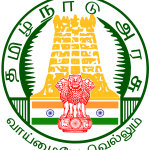- An analysis of the stretches of the river Ganga by Delhi-based environment NGO Toxics Link has revealed pollution by microplastics, defined as synthetic solid particles sized ranging 1 micrometre (μm) to 5 millimetre (mm), which are insoluble in water.
- The researchers tried to compare the microplastics concentration in Ganga water with similar studies on other rivers across the globe, like the Rhine in Europe, the Patapsco, Magothy, Rhode in North America and the Elqui, Maipo, Biobio, and Maule in South America. They found the microplastics pollution in Ganga was much higher. This was in spite of a higher per capita consumption of plastic in the European countries, North and South America, as compared to India.
- The Ganga flows across five States and has been at the centre of a massive multi-crore undertaking by the Central Government, in the form of the National Mission for Clean Ganga, to rid it off contamination.
- Microplastics are recognised as a major source of marine pollution. Untreated sewage from many cities along the river’s course, industrial waste and religious offerings wrapped in non-degradable plastics pile pollutants into the river as it flows through several densely populated cities. The plastic products and waste materials released or dumped in the river break down and are eventually broken down into micro particles and the river finally transports significantly large quantities downstream into the ocean, which is the ultimate sink of all plastics being used by humans.
- The study, ‘Quantitative analysis of Microplastics along River Ganga’ was based on an analysis of water samples at Haridwar, Kanpur and Varanasi. The highest concentration of such plastic was found at Varanasi, comprising single-use and secondary plastic products.
- Microplastics in river water, if ingested in humans or other organisms, can cause toxicity through various means. Not only are these microplastics toxic themselves, they also have a tendency to absorb various toxins present in water, including harmful chemicals.
- The study also shows that the river is acting as a carrier of plastics and microplastics and transporting significantly large quantities into the ocean.
- The study also recommended the strengthening of implementation of Extended Producer Responsibility (EPR) in Plastic Waste Management Rules since a lot of pollution in the Ganga was due to industrial waste. EPR put the onus of plastic waste management on the producers or the companies manufacturing the products.
Microplastics pollution in Ganga
Older PostARMEX-21




